Microprocessors vs integrated circuits
Microprocessors, manifesting as highly integrated central processing units, have permeated computing and communication technologies. Meanwhile, integrated circuits have revolutionized electronic technology, ingeniously shrinking and weaving countless electronic components onto silicon wafers. This article delves into their evolution, structural metamorphoses, classification paradigms, and pervasive applications.
Catalog
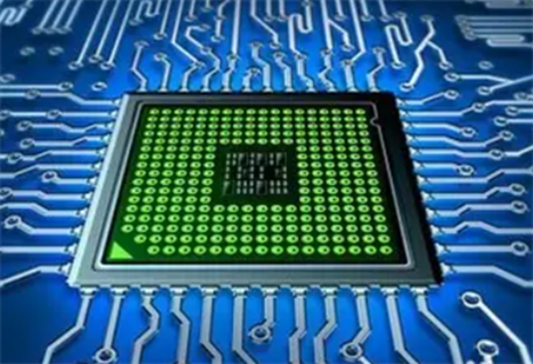
Explore What Is a Microprocessor
Regarded as the cornerstone of modern computing, a microprocessor is essentially a compact yet highly integrated central processing unit (CPU). This diminutive powerhouse integrates millions, sometimes billions, of transistors, weaving them into complex logic circuits. The architecture of a microprocessor typically encompasses core elements such as an arithmetic logic unit (ALU), a control unit (CU), registers, and a cache. The ALU tackles mathematical and logical operations; the CU interprets and executes instructions; registers offer swift access to storage; and the cache, acting as a buffer, mitigates the delay between CPU and main memory.
Advancements in microprocessor design and manufacturing have ushered in an era of processors with multi-core and multi-thread designs, markedly boosting processing power and efficiency. Each core functions independently, while multi-threading enables simultaneous multiple-task processing, thus significantly enhancing parallel processing. Modern microprocessors also boast features like vector processing units (key for graphics and scientific computing), security encryption modules, and power management units, broadening their scope of application.
Microprocessors are everywhere, supporting a variety of devices and systems. They play an important role in embedded systems, from managing simple environmental monitoring to orchestrating complex robotic control. In personal computers and servers, they are key to high-speed data processing and complex task execution. Additionally, they are the basis for modern electronics such as smartphones, tablets, and smart home devices. With the advent of the Internet of Things (IoT), microprocessors have become ubiquitous, forming part of everything from basic sensors to complex communications devices.
The criticality of microprocessors lies in their ability to enable digitization and automation. By executing complex calculations and logical operations, they open up limitless avenues for innovation, propelling the swift evolution of science and technology. Thus, microprocessors stand as a central pillar in the realm of modern electronics and information technology, both technically and applicatively.
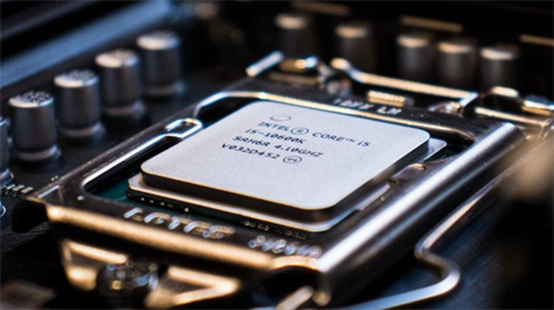
Figure 1: Microprocessor Concept
Origin of Microprocessor Structure
The journey of microprocessor architecture is a tale of technological symbiosis with integrated circuit advancements, transforming from rudimentary beginnings to today’s labyrinthine systems. Initially, microprocessors were simple; their architecture hinged on basic logic gates and elementary arithmetic logic units (ALUs). These early versions performed fundamental arithmetic and logic operations. Their capabilities were confined, limited by rudimentary registers and minimal storage.
As Moore's Law propelled forward, transistors miniaturized. Microprocessors began to burgeon, integrating diverse functions, and expanding processing prowess. The shift was palpable: from 4-bit and 8-bit to the expansive realms of 32-bit and 64-bit microprocessors. This leap in word length heralded a new era of enhanced data processing capabilities. Consider the 64-bit microprocessor: it addresses vast memory spaces, managing large data sets and intricate applications with a newfound efficiency.
Modern microprocessors are a tapestry of complexity. Beyond the basic ALU, they encompass dedicated floating-point units (FPUs). These specialized units are adept at handling tasks heavy with floating-point operations, like scientific computing or graphics rendering, with remarkable efficiency.
Facing the constraints of physicality, microprocessor designs have turned to innovative technologies such as multi-core and hyper-threading. Multi-core processors, by weaving multiple CPU cores onto a single chip, excel in parallel task processing. This design significantly boosts processing efficiency and responsiveness. Hyper-threading technology further enhances this capability, enabling each core to juggle multiple threads simultaneously, pushing the boundaries of parallel processing.
In the realm of integrated circuit technology, microprocessor manufacturing has transitioned from the micron scale down to the nano frontier. FinFET technology, a marvel in three-dimensional transistor design, not only curtails leakage between transistors but also allows for denser transistor integration. This leap results in heightened performance and energy efficiency. Advanced packaging technologies, such as 3D IC and Chiplet designs, further catapult microprocessors into a realm of greater power, higher integration, and reduced energy consumption.
Thus, the microprocessor architecture has evolved in tandem with technological strides, from its simplistic origins to the current landscape of high complexity and potency. This evolution fuels remarkable surges in computing power, underpinning myriad high-end applications, including but not limited to artificial intelligence, big data analysis, and high-performance computing.
Application Scenarios of Microprocessors
Microprocessors, with their vast and intricate landscape, can be categorized into several main groups. These groups are distinguished by their purpose, performance characteristics, and application scenarios: general-purpose high-performance microprocessors, embedded microprocessors, digital signal processors (DSP), and microcontrollers.
In the realm of general-purpose high-performance microprocessors, versatility is key. Designed to handle a broad spectrum of computing tasks, they range from mundane office applications to sophisticated data analysis and graphics processing. Characterized by higher clock frequencies, substantial cache sizes, and advanced pipeline architectures, these processors are powerhouses. They find their place in desktops, laptops, servers, and workstations. Intel's Core series and AMD's Ryzen series exemplify this category. They stand out for their high performance and energy efficiency, underpinned by technologies like parallel processing, cache optimization, and dynamic frequency adjustment.
Embedded microprocessors and DSPs tell a different story. Tailored for specific application scenarios like audio and image processing or communication protocols implementation, these processors diverge from their general-purpose counterparts. DSPs shine with their higher data throughput capabilities and specialized hardware acceleration, perfect for continuous data streams. Embedded processors, compact and energy-efficient, are ideal for constrained spaces and power-sensitive applications found in smartphones, IoT devices, and automotive systems. Texas Instruments DSPs and Qualcomm's Snapdragon series are typical of this category.
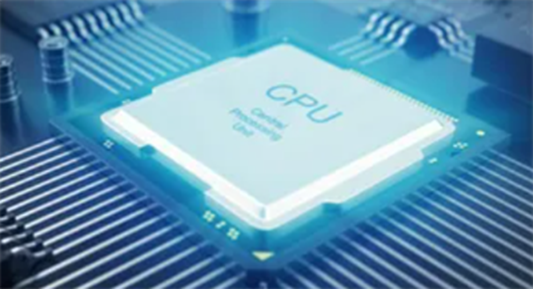
Figure 2: Microprocessor Architecture
Then we have microcontrollers (MCUs), compact powerhouses in their own right. These monolithic integrated circuits merge a microprocessor core with memory and programmable input/output ports. Designed for the automation of equipment and machines, they are synonymous with high integration, low power consumption, and reliability. MCUs, embedded in systems from home appliances to automotive electronics and industrial controls, typically come with diverse peripheral interfaces. These interfaces cater to various sensors and actuators, exemplified by the Arduino and STM32 series in educational, hobbyist, and industrial applications.
Each microprocessor type, with its unique design focus and application areas, mirrors the diversity and adaptability of microprocessor technology. However, as technology evolves, the lines between these categories blur. High-end embedded processors now rival the performance of general-purpose ones, and some microcontrollers have begun integrating DSP-like functions to manage complex algorithms. This convergence reflects the ever-evolving, multifaceted nature of microprocessor technology.
Explore What an Integrated Circuit Is
An integrated circuit (IC), a cornerstone in the realm of modern electronic technology, epitomizes the art of shrinking and amalgamating a plethora of electronic components—transistors, resistors, capacitors—onto a singular semiconductor wafer. This feat is achieved through sophisticated semiconductor processing techniques, such as photolithography, etching, and chemical vapor deposition. These methods empower manufacturers to intricately forge complex circuit patterns on minuscule chips.
Tracing the trajectory of integrated circuits reveals a journey from small-scale integration (SSI) to the dizzying heights of ultra-large-scale integration (ULSI). This progression has not just multiplied the number of transistors per chip; it has revolutionized processing power and energy efficiency while slashing costs. Consider the modern microprocessor: a silicon marvel housing billions of transistors, a scale once deemed fantastical in the early days of integrated circuits.
The significance of integrated circuits extends far beyond their technical marvel. Their influence permeates the entire electronics industry and spills into numerous other sectors. Take the computer realm, where ICs have spawned more potent processors and expanded memory capacities, fueling the evolution of personal computers and servers. In communications, they are the silent heroes behind smartphones, wireless routers, and satellite links. Beyond these, their reach extends to medical equipment, automotive technology, aerospace, and even household appliances. The advanced data processing in MRI and CT scanners? A direct legacy of integrated circuitry.
Integrated circuits are more than just technological marvels; they are social and economic catalysts. They make electronic devices more compact, efficient, and smart. They laid the foundation for globalization and the emergence of the information society. In essence, the proliferation and advancement of integrated circuits are very important in promoting the continuous progress of modern science and technology.
Application Scenarios of Integrated Circuits
In the diverse realm of integrated circuits (ICs), three main types stand out: analog, digital, and the digital-analog hybrid. Each, with its distinct function, underscores the vast influence of these electronic essentials.
Analog integrated circuits excel in handling continuously varying signals. Central to their domain are tasks such as signal amplification, filtering, and frequency modulation. Consider the operational amplifier – an analog IC icon. It plays a pivotal role in audio systems and sensor interfaces. These ICs also shine in radio frequency amplifiers and bioelectrical signal amplifiers in medical devices, showcasing their impressive versatility.
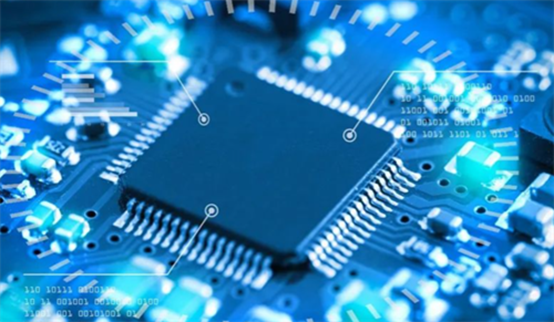
Figure 3: Applications of Integrated Circuits
In stark contrast, digital integrated circuits specialize in processing binary-form digital signals. They form the crux of our technological world, with microprocessors, memory chips, and logic gates at their core. These ICs are the pulse of computers and smart devices, thriving in high-speed and high-precision tasks. Envision the CPU of a smartphone or a computer's RAM – epitomes of digital ICs.
Connecting these worlds are digital-analog hybrid ICs. They are good at managing analog and digital signals and are a major part of smartphones, digital cameras, and automotive electronics. Commonly represented as analog-to-digital converters (ADC) and digital-to-analog converters (DAC), they play a key role in audio processing and image capture.
These IC types reflect the adaptability and diversity of electronic technology. As technology progresses, the integration of these ICs on single chips advances, meeting the demands of modern devices for performance, miniaturization, and energy efficiency. Their pervasive influence touches everything from industrial automation to personal electronics, integrating seamlessly into our daily lives.
How Integrated Circuits Are Made
Integrated circuit fabrication is an exercise in precision and complexity. It involves detailed steps, from wafer preparation to final packaging and testing. Let's delve into these critical stages:
Wafer Preparation: It all starts with silicon wafer preparation. Silicon, lauded for its semiconductor properties, is fundamental in IC manufacturing. These wafers, derived from single-crystal silicon rods, undergo rigorous polishing for a defect-free surface.
Photolithography and Etching: Then, attention shifts to the wafer, where circuit patterns emerge through photolithography. This intricate process involves coating the wafer in a photoresist, and then exposing it to UV light using a mask. The etching that follows, either chemical or plasma-based, imprints the desired pattern onto the wafer.
Doping: Here, doping introduces impurities into the silicon wafer, altering its electrical conductivity. This step creates P-type and N-type semiconductors, using diffusion or ion implantation.
Chemical Vapor Deposition (CVD): CVD is essential for forming individual layers on a wafer, playing an important role in building electronic components such as transistors and capacitors.
Interconnection and Routing: This phase involves creating metal traces on the chip, and connecting different electronic components.
Understand How Integrated Circuits Work
In the realm of integrated circuits, complexity reigns. At the heart of these marvels lies a reliance on the intricate physical properties of their internal electronic components, coupled with sophisticated circuit design principles. Transistors, in their role as the pivotal element, orchestrate the circuit's functionalities. They deftly manipulate current and voltage, enabling diverse functions like signal amplification, filtering, and logic operations. The essence of these operations is a dance of precision and complexity.
Let's delve into the components:
Transistor: The cornerstone of integrated circuits, the transistor, often manifests as a field-effect transistor (FET), specifically a metal-oxide-semiconductor field-effect transistor (MOSFET). Its dual nature as a switch and an amplifier is fascinating. As a switch, it governs current flow; as an amplifier, it bolsters signal strength. Its operation hinges on the gate voltage's control over the conductive path, thus directing the current's journey through the source and drain.
Logic Gates: These are the building blocks of digital integrated circuits, encompassing AND, OR, and NOT gates. Constructed from several transistors, they execute fundamental logic functions. Integrated circuits leverage these to delve into complex data processing and decision-making.
Analog Circuit Components: In the analog realm, components like transistors, resistors, and capacitors handle the ebb and flow of continuously changing signals. Consider the operational amplifier: a common analog integrated circuit adept at tasks such as signal amplification and filtering.
Signal Conversion: The fusion of digital and analog worlds in hybrid integrated circuits sees analog-to-digital converters (ADCs) and digital-to-analog converters (DACs) as crucial players. They bridge the gap between analog and digital realms, enabling digital systems to interact with the tangible world.
Storage Elements: Integrated circuits also harbor data storage elements like flash memory or dynamic random-access memory (DRAM). These elements, through a symphony of transistors and capacitors, store and retrieve information.
In conclusion, integrated circuits are a tapestry of precision-designed electronic components. Their complexity and efficacy depend on the quantity, configuration, and interconnections of transistors, intertwined with innovative circuit design. As manufacturing technology evolves, these circuits increasingly miniaturize, packing more functions into tinier spaces. This evolution propels the relentless march of electronic technology, constantly pushing the boundaries of innovation.
Functions of Integrated Circuits
Integrated circuits (ICs), pivotal in myriad electronic devices, perform a spectrum of critical functions. The following analysis dives into their key features and applications, unraveling their complexity and the abrupt changes in their utility:
Signal Amplification: Integrated circuits are prominent in the design of audio, video, and communications systems. Consider the operational amplifier, a common but powerful analog integrated circuit. They're good at boosting weak current signals while maintaining stability—which plays an important role in medical devices like audio amplifiers, wireless communications, and electrocardiographs.
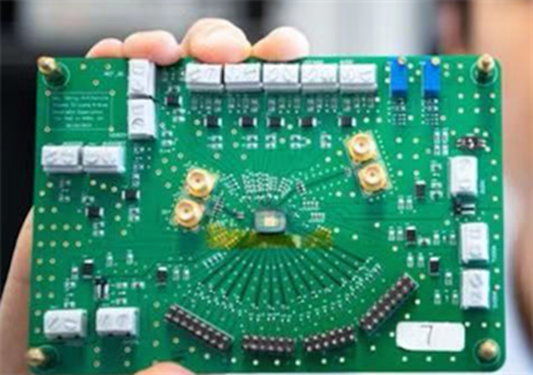
Figure 4: Integrated Circuit Functions
Logic operations: Digital integrated circuits take center stage here. Microprocessors and digital signal processors (DSPs) are capable of handling logic operations expertly. They range from basic logic gates (AND, OR, NOT) to complex arithmetic calculations. These processors are an integral part of computers, smartphones, and high-performance computing devices.
Memory Storage: Think memory chips. Dynamic random access memory (DRAM) and static random access memory (SRAM) mark important development trajectories for integrated circuit applications. These devices play an important role in data processing and storage and are fundamental to the functionality of computer systems, mobile devices, and other digital technologies.
Data transformation: The interplay of digital and analog. Hybrid integrated circuits, such as analog-to-digital converters (ADCs) and digital-to-analog converters (DACs), are critical in signal conversion. Their widespread use of audio equipment, image sensors, and communication tools highlights their critical role in precise signal conversion.
Communication Interface: ICs also shine in forging communication interfaces and protocols. Consider Ethernet, USB, Wi-Fi, and Bluetooth chips—vital cogs ensuring modern equipment interoperability.
The roles of integrated circuits underscore their versatility and ubiquitous presence in contemporary technology. Spanning consumer electronics, industrial automation, medical apparatus, and communication systems, ICs are the bedrock of intricate functionality and superior performance. As technology progresses, IC applications broaden, venturing into AI, the Internet of Things, and autonomous vehicles, propelling electronic innovation relentlessly forward.
Complexity of Microprocessors and Integrated Circuits
At its core, the microprocessor stands out as a unique, intricate variant of the integrated circuit. Primarily, it acts as the central processing unit (CPU) within computer or embedded systems. This highly integrated chip, teeming with thousands of transistors, tackles core computing tasks - think arithmetic and logical operations, control instructions, and directing data flow. The heart of a microprocessor includes several critical components: a control unit (CU), an arithmetic logic unit (ALU), registers, and a cache. These elements synergize, orchestrating complex data processing and control functions.
In stark contrast, integrated circuits cast a wider net. Their realm extends beyond microprocessors, encompassing operational amplifiers, memory chips, timers, and a spectrum of analog and digital circuits. Integrated circuits branch into three categories: analog, digital, and mixed-signal (blending analog and digital components). Each type finds its niche in various electronic devices, ranging from the simplicity of electronic watches to the sophistication of mobile phones and computers.
Delving into manufacturing, microprocessors, and other integrated circuits share a common lineage in their fabrication processes. This intricate ballet of creation involves several steps: silicon wafer preparation, photolithography, ion implantation, etching, and metallization. Yet, microprocessors demand a higher echelon of manufacturing precision and process control. Their complexity calls for more advanced transistor miniaturization and an increased transistor count per chip. As Moore's Law marches forward, with transistor numbers on microprocessors doubling roughly every 18 to 24 months, the challenges in integrated circuit design and manufacturing escalate.
A microprocessor, although a member of the integrated circuit family, has unique characteristics. Its computing power, design complexity, and stringent manufacturing requirements set it apart. This unique shape makes microprocessors an important part of electronic equipment and plays a key role in high-speed, complex data processing and intelligent control.
The Difference Between Microprocessors and Integrated Circuits
The realms of microprocessors and integrated circuits intertwine, yet diverge profoundly in their essence, utility, sphere of application, intricacy, dimensions, chip varieties, and operational methodologies.
Essence and Utility
Microprocessor: This device stands as a sophisticated, multifaceted integrated circuit, essentially the brain of a computer or embedded system. It primarily juggles arithmetic and logical tasks, manipulates data, and orchestrates the symphony of other circuits and gadgets. A microprocessor's architecture boasts multiple cores, caches, and interfaces for input/output – a testament to its complexity.
Integrated circuit: On the other hand, an integrated circuit morphs a tapestry of electronic elements – resistors, capacitors, transistors – onto a semiconductor base, typically silicon. Their roles are far-reaching, spanning signal amplification, data storage, power regulation, signal transmutation, and beyond.
Application Spectrum
Microprocessors excel in arenas demanding intricate data manipulation and computational prowess – think personal computers, servers, smartphones, and embedded systems.
Conversely, integrated circuits flourish across a broader spectrum. Their utility ranges from the simplicity of timers and power controllers to the sophistication of intricate communication systems and high-caliber computers.
Complexity Versus Size
A microprocessor bedecked with millions to billions of transistors, leans towards greater complexity. Its larger stature is a necessary accommodation for its expanded features and potent processing capabilities.
Integrated circuits, meanwhile, traverse a spectrum from the simplistic, harboring a mere handful of components, to the immensely complex, teeming with millions of transistors. Their size varies accordingly.
Chip Varieties and Operational Techniques
In the realm of chip types, microprocessors represent a singular category, focused intently on data processing, demanding intricate programming, and control directives.
Integrated circuits, however, present a more colorful palette: digital, analog, and hybrids thereof. Their operational methods dance to the tune of their design intents and functionalities.
A microprocessor, while a specialized integrated circuit variant, zeroes in on data crunching and computational feats. Integrated circuits, with their broader conceptualization, cater to a more diverse array of applications and functionalities, encapsulating the vast expanse of electronic technology. These distinctions mirror their unique roles and pivotal significance in the world of electronic systems.
Different Uses of Integrated Circuits and Microprocessors
The crux of the distinction between microprocessors and integrated circuits lies entrenched in their design intent, structural intricacy, and architectural framework. These elements collectively steer their roles and efficacies within the intricate tapestry of electronic systems.
Purpose and Utilization
Microprocessor: Crafted with precision for general computing endeavors – data handling, calculations, and command execution. They stand as the intellect of computers and embedded frameworks, decoding and enacting software directives.
Integrated Circuit: Tailored for distinct roles – signal boosting, data storage, power governance, or signal transmutation. Their design is often singular in focus, manifesting as specialized entities like amplifier ICs, memory modules, or communication interfaces.
Structural Intricacy
Microprocessors emerge as structurally more elaborate, teeming with transistors in the millions or billions. Their internal architecture is a labyrinth of cores, cache systems, memory strategies, and varied input/output mechanisms.
In contrast, integrated circuits display a spectrum of complexity. Some are elemental, with scant components, while others, akin to graphics processing units, verge on the complexity of a microprocessor.
Architectural Blueprint
Microprocessor architectures cater to a broad array of general computing tasks, often rooted in intricate instruction set architectures (e.g., x86, ARM). They facilitate multitasking, parallel processing, and elaborate data maneuvers.
Conversely, an integrated circuit's architecture is a mirror of its specific functional need. Take an analog amplifier circuit: it incorporates just what's essential for signal amplification and processing. A memory chip, meanwhile, zeroes in on data storage and retrieval.
While a microprocessor is a multifaceted integrated circuit honed for diverse computing tasks, other integrated circuits emerge as specialized solutions for distinct electronic functions and applications. This dichotomy underscores their varied roles and significance in the realms of electronics and computing technology.
Conclusion
By delving into the historical evolution, structural intricacies, and the diverse classifications and applications of microprocessors and integrated circuits, we unearth a striking revelation. These twin pillars of technology have not just accelerated computing power leaps; they have revolutionized electronic product innovation. Consider their pervasive use: the microprocessor's ubiquity and the technical adaptability of integrated circuits shine as testaments to electronic technology's boundless innovative capacity. As we march forward in this era of relentless technological progression, microprocessors and integrated circuits stand as beacons. They herald not only ongoing transformations in the realm of electronic technology but also forge new pathways for human societal advancement.